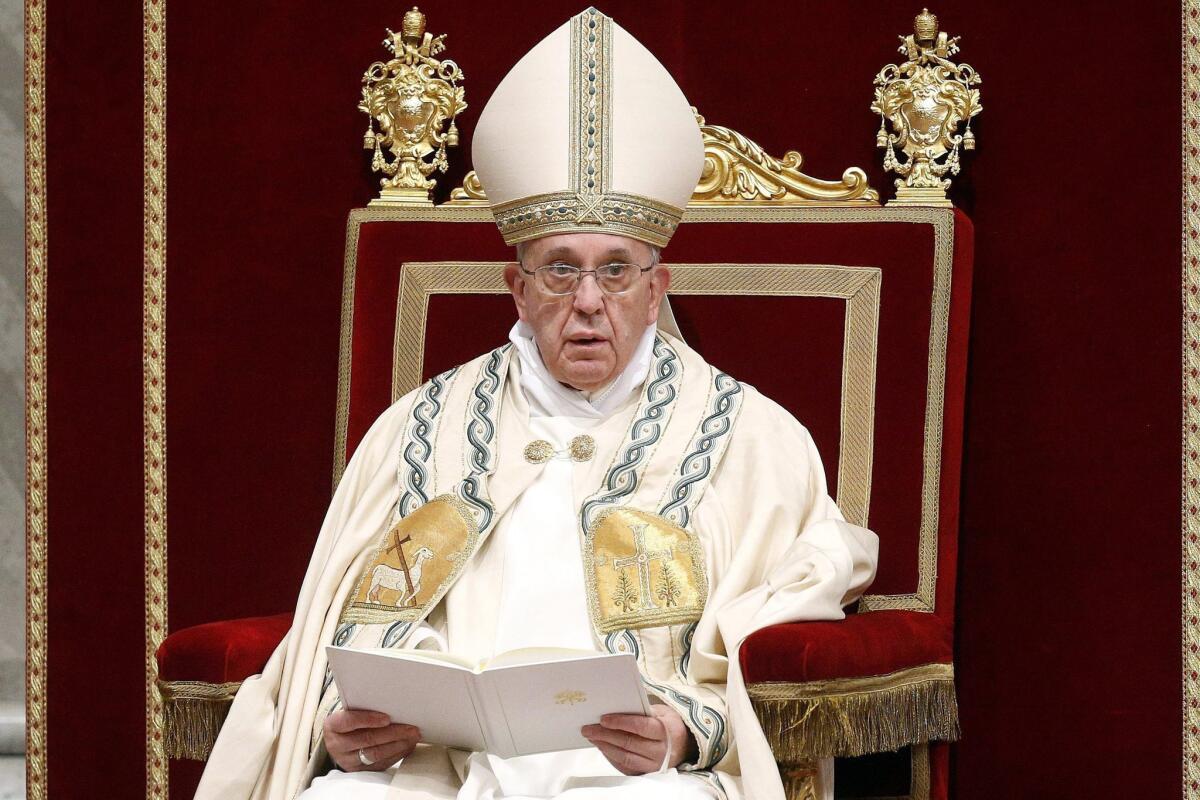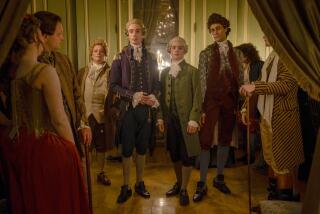Pope Francis, Esquire’s ‘Best Dressed Man of 2013’

- Share via
There’s a whiff of publicity stunt about Esquire magazine’s decision to name Pope Francis its “Best Dressed Man of 2013.” But the magazine’s editors are pretty astute in recognizing that the pope’s “black shoes and unadorned, simplistic regalia” are more than just a personal fashion choice.
Esquire approvingly quotes Mark-Evan Blackman, an assistant professor of menswear design at the Fashion Institute of Technology, who says the pope’s attire “really does reflect the mindset behind it.”
A defender of the red-shoe-wearing Benedict XVI took to Twitter to defend the pope emeritus’ footwear. He noted that in Catholic culture red symbolizes the blood of the martyrs, and suggested that Francis shouldn’t casually discard such edifying imagery. This is a variation on the larger conservative Catholic critique of Francis’ style: that his seeming humility disguises an arrogant rejection of deeply rooted church traditions.
YEAR IN REVIEW: 10 tips for a better life from The Times’ Op-Ed pages
In fact, Benedict’s fondness for finery -- especially the elaborate vestments he wore at religious rites -- represented a departure from the more austere tastes of Popes Paul VI and John Paul II.
As I pointed out in a column in The Times a few years ago: “Benedict has returned to his liturgical roots, sporting massive miters, celebrating Mass in the Sistine Chapel with his back to the congregation and leading Good Friday services vested in a fiddleback chasuble. The pope’s aides say that his choice of vestments is designed to demonstrate continuity with the church’s past. Liberals are more inclined to see it as a slap at the spirit of Vatican II.”
Intermingled with Benedict’s preference for elaborate vestments was his belief in a bright line between the clergy and laity. By contrast, Francis has been critical of “clericalism.” That attitude is reflected by the new pope’s decision to re-mothball the gold, jeweled miters that Benedict favored. At his inaugural Mass, Francis wore a plain miter and relatively unadorned vestments.
Francis is unlikely to go so far as dispensing with vestments altogether (as some priests in the Anglican Church want to do), but clearly the red shoes and jeweled miters conflict with his notion of a clergy that serves rather than rules. So Esquire is on firm ground in inferring that clothes make the pope.
ALSO:
When it comes to pensions, California is no Detroit
From Miley Cyrus to that Pantene ad, 5 feminist arguments that sparked debate in 2013
Twitter: @MichaelMcGough3
More to Read
A cure for the common opinion
Get thought-provoking perspectives with our weekly newsletter.
You may occasionally receive promotional content from the Los Angeles Times.











